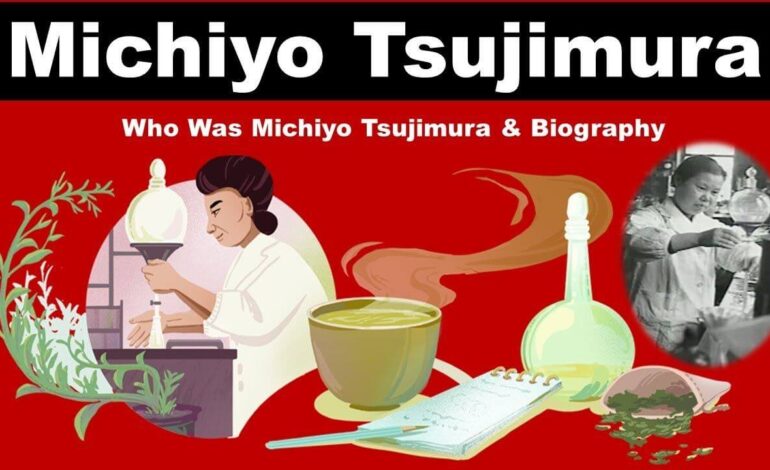
The Wonderful Life and Legacy of Michiyo Tsujimura
Rosalind Franklin and Marie Curie are two well-known figures in science and invention. Still, numerous other outstanding researchers have made substantial contributions to their disciplines. One such unappreciated scientist whose life and achievements deserve attention is Michiyo Tsujimura.
This article will examine Michiyo Tsujimura fascinating life story, her groundbreaking achievements, and the lasting impact that she has had on the field of chemistry.
Childhood and Education
On July 28, 1923, Michiyo Tsujimura was born in Tokyo, Japan. Her family placed a high importance on education, and she has shown a strong interest in the natural world from an early age. She was a naturally curious young girl who performed her little experiments in the backyard. Her parents noticed Tsujimura’s love of science and urged her to pursue her goals.
Tsujimura joined the renowned University of Tokyo after finishing elementary school, majoring in chemistry. Tsujimura was one of the university’s few female students in the science department at the time, and the school was well-recognized for its demanding academic programs. She had difficulties because of her gender but overcame them because of her determination and focus on her objectives.
Chlorophyll Research at the Frontier
Tsujimura started her significant work in the field of chlorophyll in 1948, following the completion of her undergraduate studies. Despite considerable scientific investigation, many of the mysteries surrounding chlorophyll, the green pigment in plants essential for photosynthesis, remained unsolved.
The work of Michiyo Tsujimura centered on identifying and separating the many pigments that makeup chlorophyll. She called the new form of chlorophyll. She found Chlorophyll-d due to her study. This discovery marked a turning point in our knowledge of photosynthesis and has far-reaching effects on agriculture and plant life.
Impacts on Food and Agricultural Sciences
Chlorophyll-d, a pigment in certain red algae, is essential for these organisms’ effective absorption of light energy in deep seas. The breakthrough made by Tsujimura created new opportunities for agriculture. Scientists and agriculturalists developed more effective photosynthesis processes, eventually leading to higher crop yields, by understanding how these algae capture and use light.
Additionally, Tsujimura’s contributions to the field of food science were significant in creating techniques for maintaining the nutritional value and freshness of fruits and vegetables. Her work cleared the way for advances in food preservation that now benefit global customers, the food industry, and farmers.
Challenges and Results
There were difficulties throughout Tsujimura’s career. She experienced prejudices and discrimination as a woman in an overwhelmingly male-dominated field. She persisted nonetheless, focused on her love of scientific research. She broke down sometimes, but her commitment to her job and passion for research kept her going.
She received her Ph.D. in 1953, which was an impressive accomplishment considering the societal norms of the time. Her studies on chlorophyll and its derivatives resulted in her thesis, “Studies on the Green Pigments in Some Red Algae,” which she wrote.
Recognition and Legacies
Even though Michiyo Tsujimura’s work was innovative, it took a long time for her accomplishments to be acknowledged. Female scientists frequently faced difficulties in the male-dominated field of research in trying to be recognized for their contributions.
Tsujimura’s groundbreaking studies on chlorophyll and her contributions to agricultural science were widely acknowledged in the second half of the 20th century. Scientists and researchers in botany, agriculture, and food science continue to be inspired by her work.
Tsujimura received the desired Order of Culture from the Japanese government in 1999 for her remarkable research contributions. This honor served as a monument to her commitment and the lasting significance of her research.
Personal History and Interests
Beyond her interests in science, Michiyo Tsujimura was passionate about literature and art. She was a gifted poet as well as a passionate painter. Her artistic interests provided an alternative to her hard scientific work and allowed her to view the world’s beauty and wonder from many angles.
Tsujimura’s love of the natural world and her intense awareness of its finer details frequently found expression in her poetry and artwork. She held that a holistic approach to comprehending life, incorporating science and the arts, was necessary for a deeper and more thorough understanding of the universe.
Motivating Person
For people who struggle with difficulties and discrimination in their quest for scientific greatness, Michiyo Tsujimura’s life story has gained notoriety as an inspirational one. Young scientists, especially women, are continually motivated by her ongoing dedication to her profession and her desire to overcome gender stereotypes to achieve their scientific goals.
Permanent Relevance
Tsujimura produced several scientific advances and discoveries that are still relevant and significant in modern research. Her study on chlorophyll and its byproducts set the path for current studies on photosynthesis, plant biology, and creating more environmentally friendly farming methods.
Remembrance
In recent years, an attempt has been made to recognize Michiyo Tsujimura’s scientific contributions. She has left behind a legacy being shared with a broader audience because it includes aspects of her life and work in exhibitions, films, and academic publications.
The life and legacy of Michiyo Tsujimura are a tribute to the strength of zeal, determination, and dedication to searching for knowledge. Her contributions to botany, agriculture, and environmental science are still a source of inspiration and knowledge for scientists and researchers worldwide. Her narrative serves as a reminder that great discoveries can emerge from the most unlikely sources and that exploring scientific knowledge overcomes all social, racial, and gender barriers.
Conclusion
Michiyo Tsujimura’s life story from a young, curious Tokyo girl to a pioneering researcher in the field of chlorophyll is nothing short of inspirational. Her contributions to food science, agriculture, and our comprehension of nature have made a lasting impression on the scientific community.
The tale of Tsujimura also serves as a lesson in the value of perseverance and determination in the face of difficulty. She has inspired aspiring scientists, especially women who continue to break boundaries, due to her commitment to her profession, enthusiasm for science, and steadfast commitment to her goals.
The areas of botany, agriculture, and food science continue to benefit from Michiyo Tsujimura’s contributions, even though her work may not be as well known as that of some of her colleagues. Her outstanding achievements serve as an example of the strength of curious brains and the devotion of those who are passionate about learning new things.






